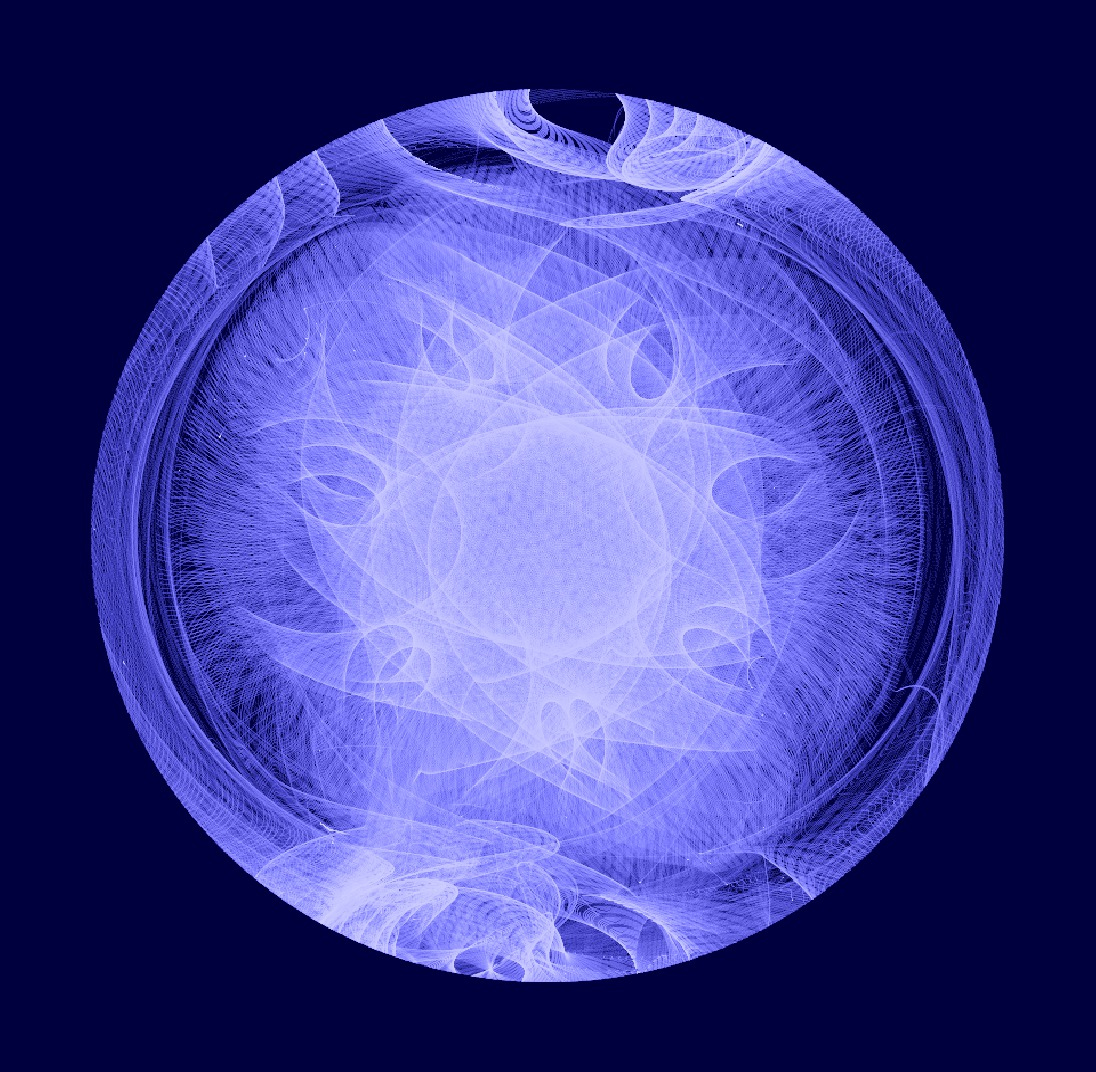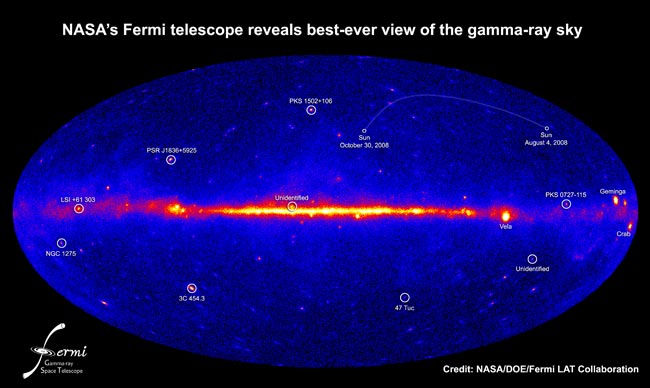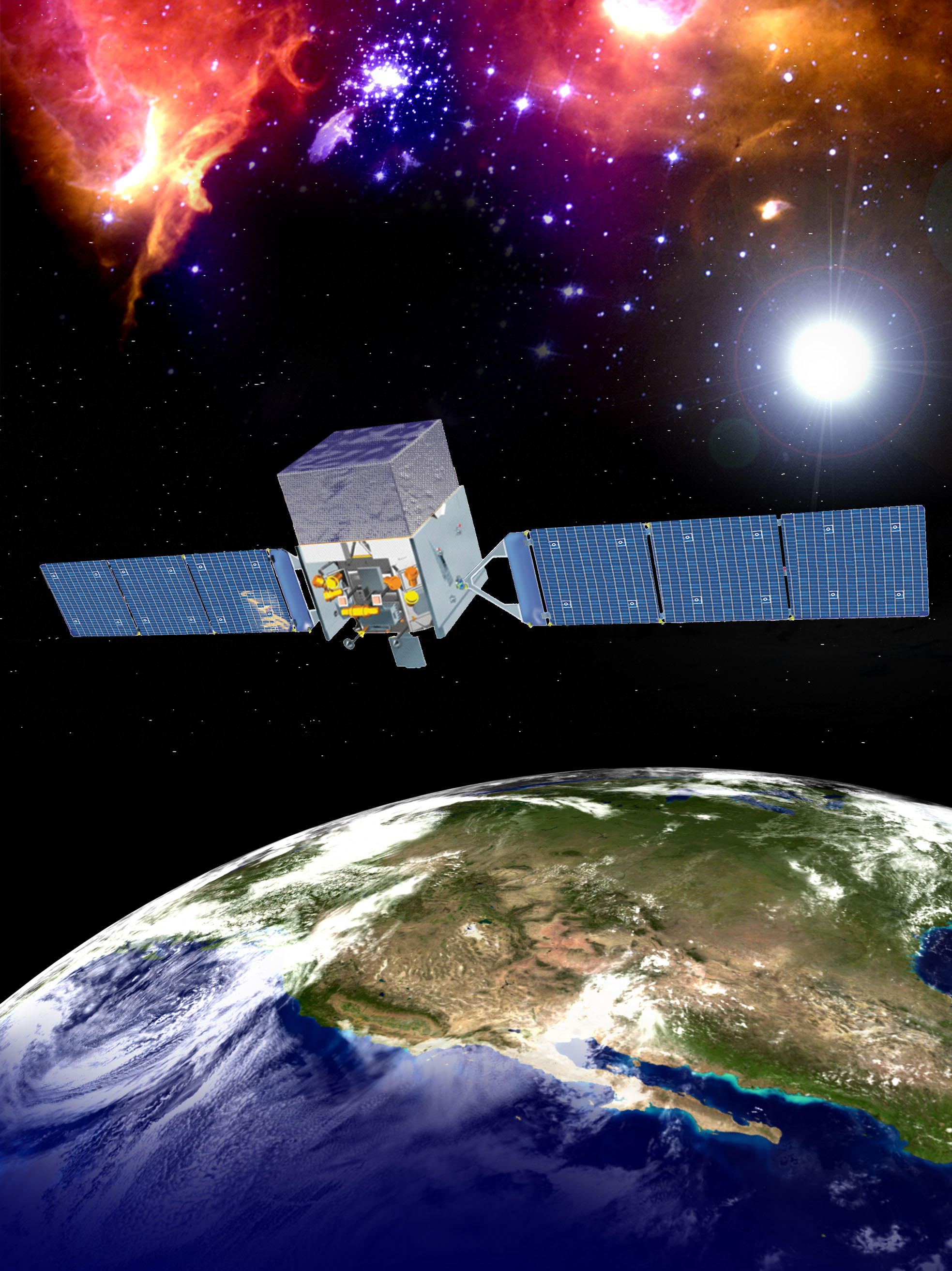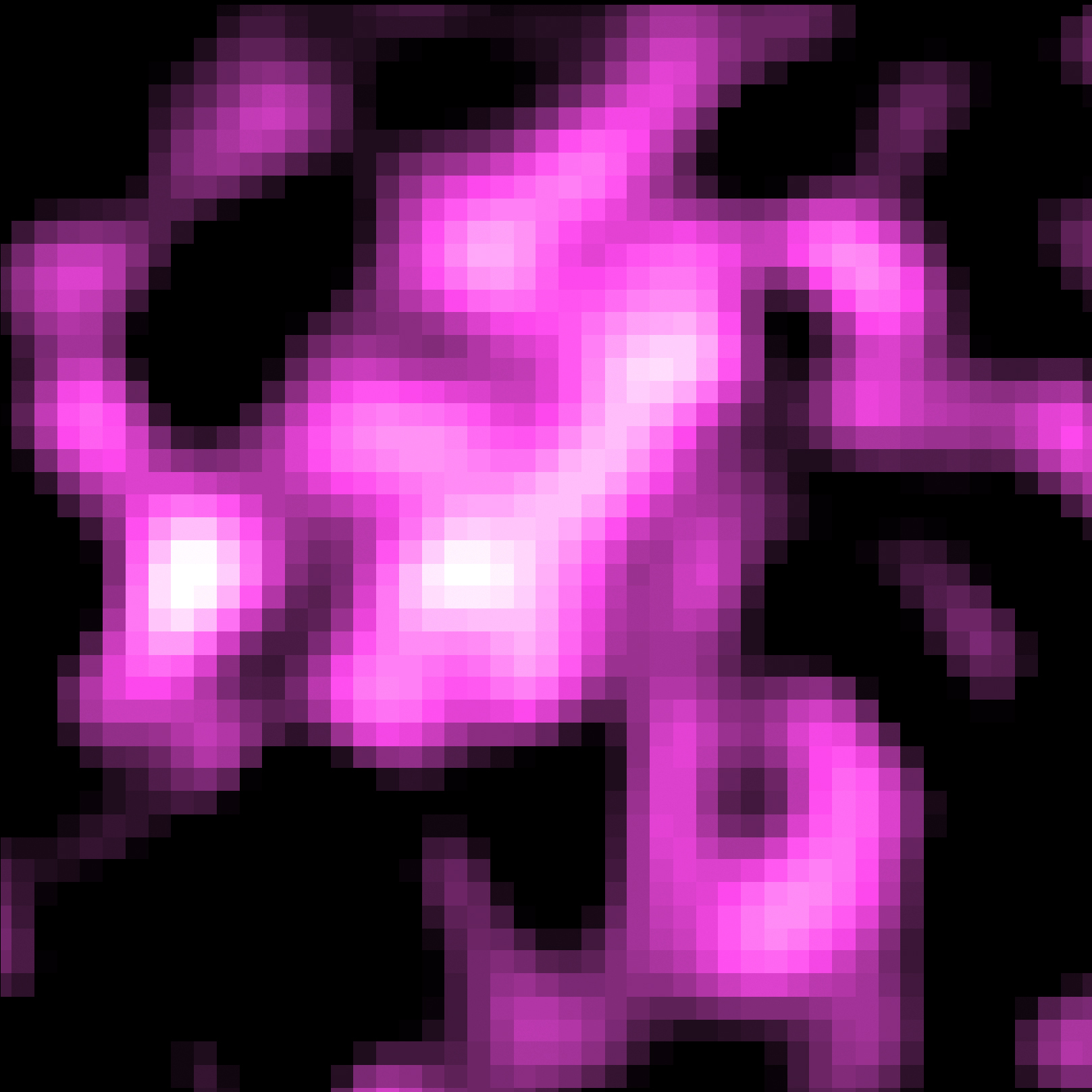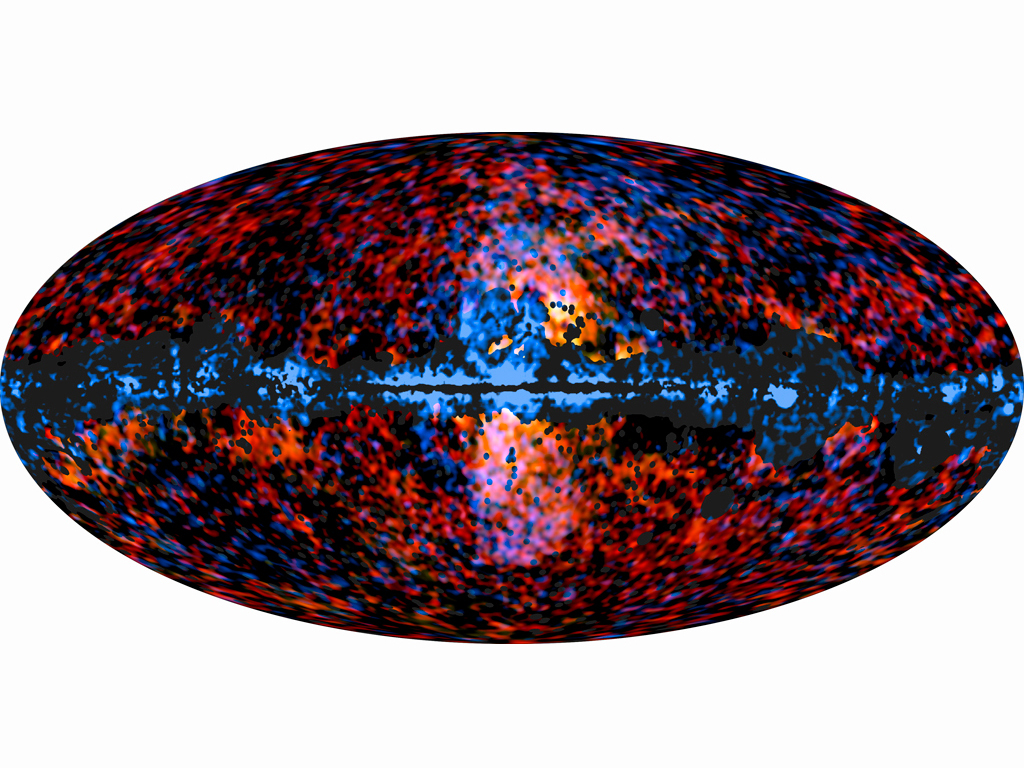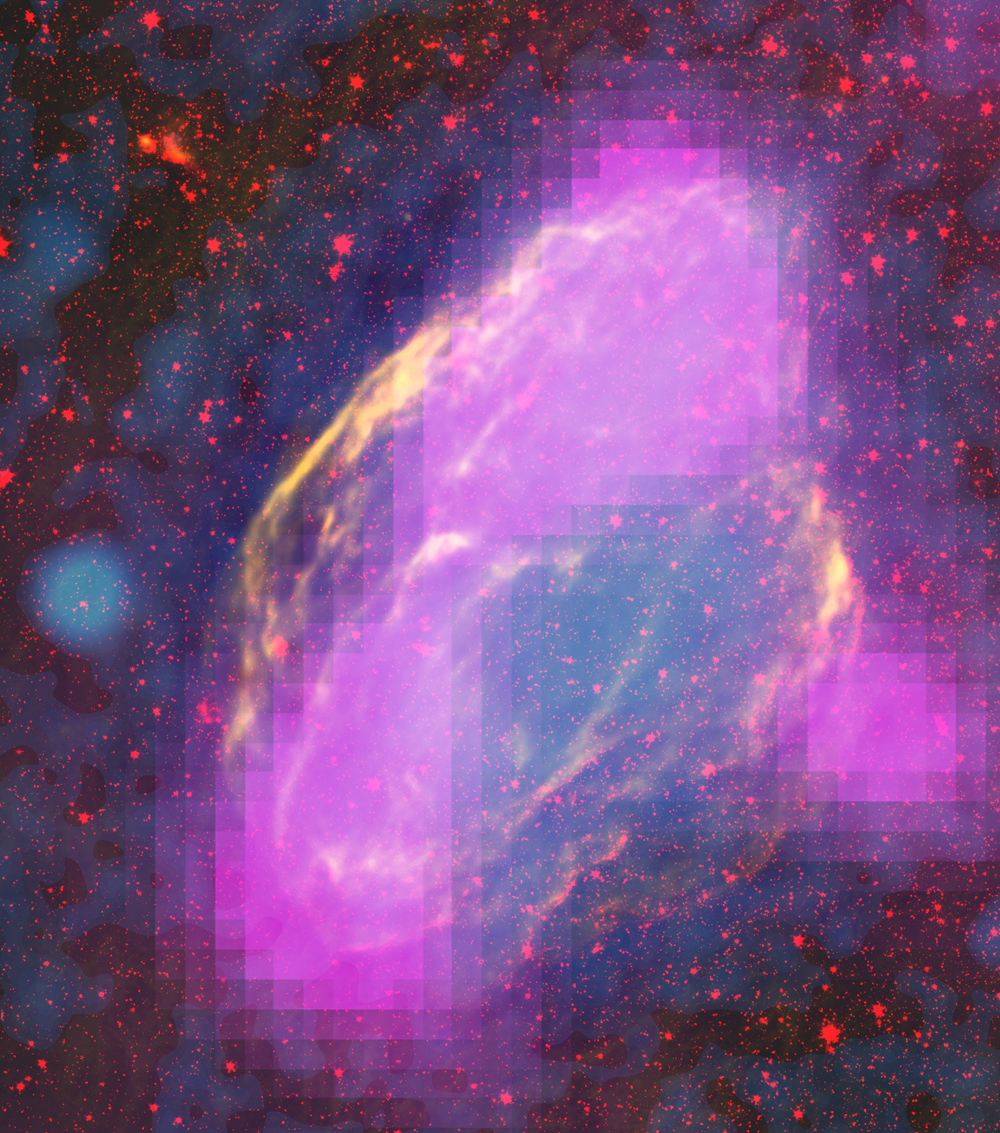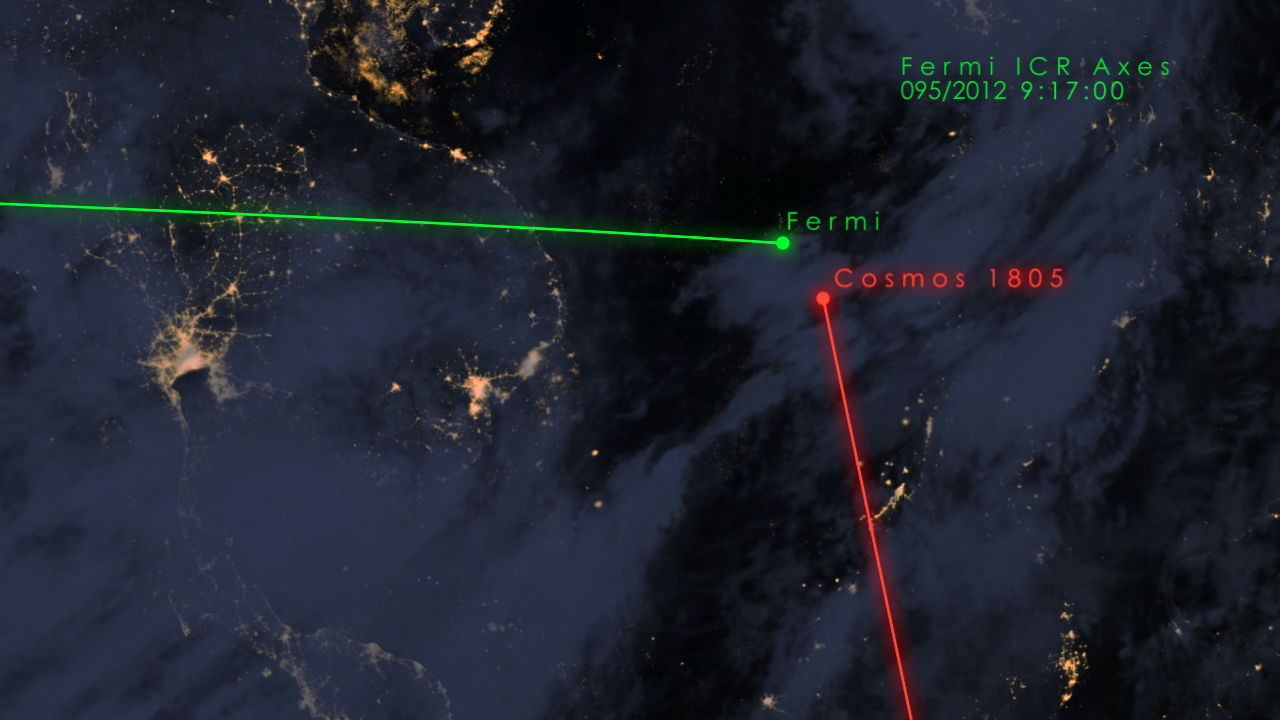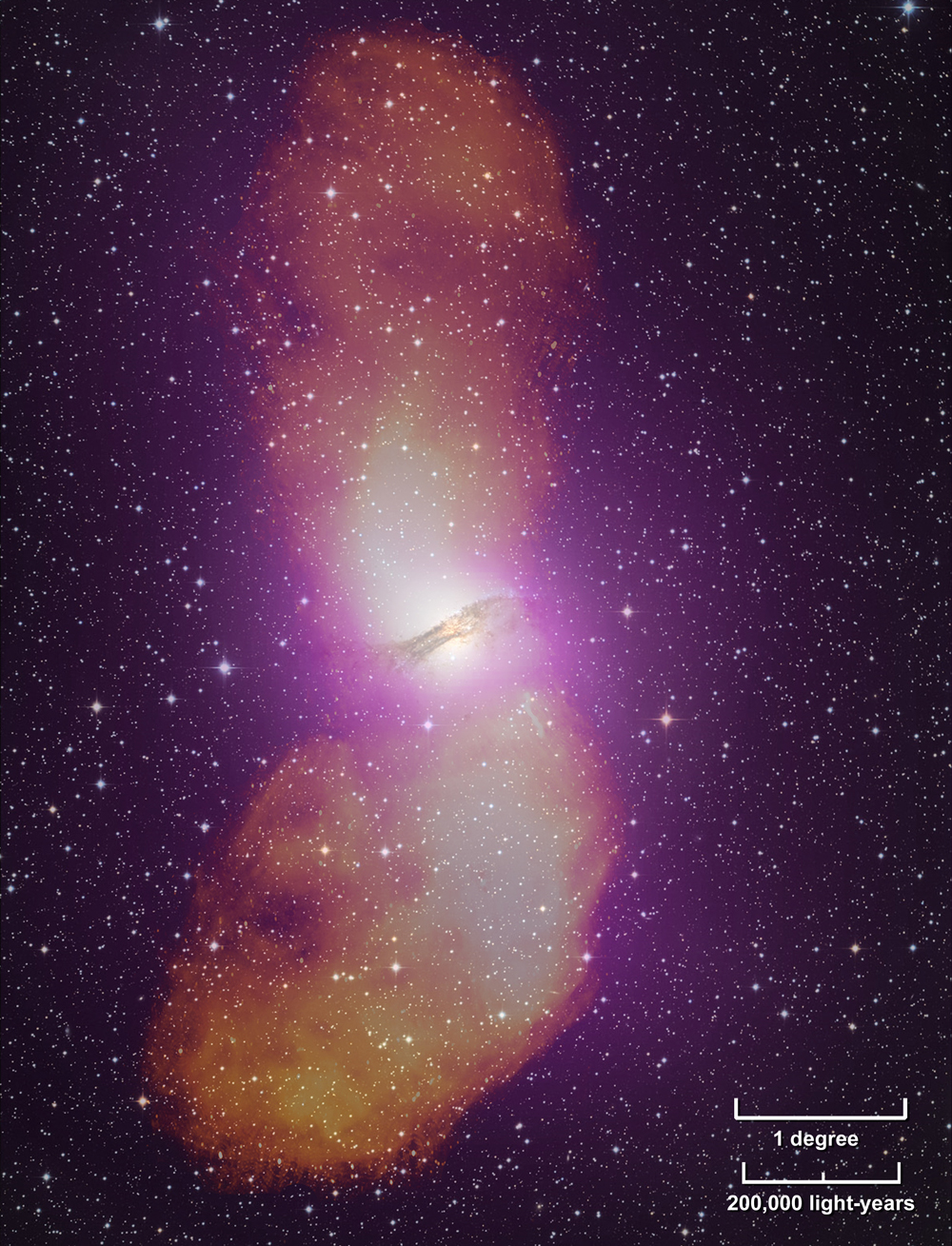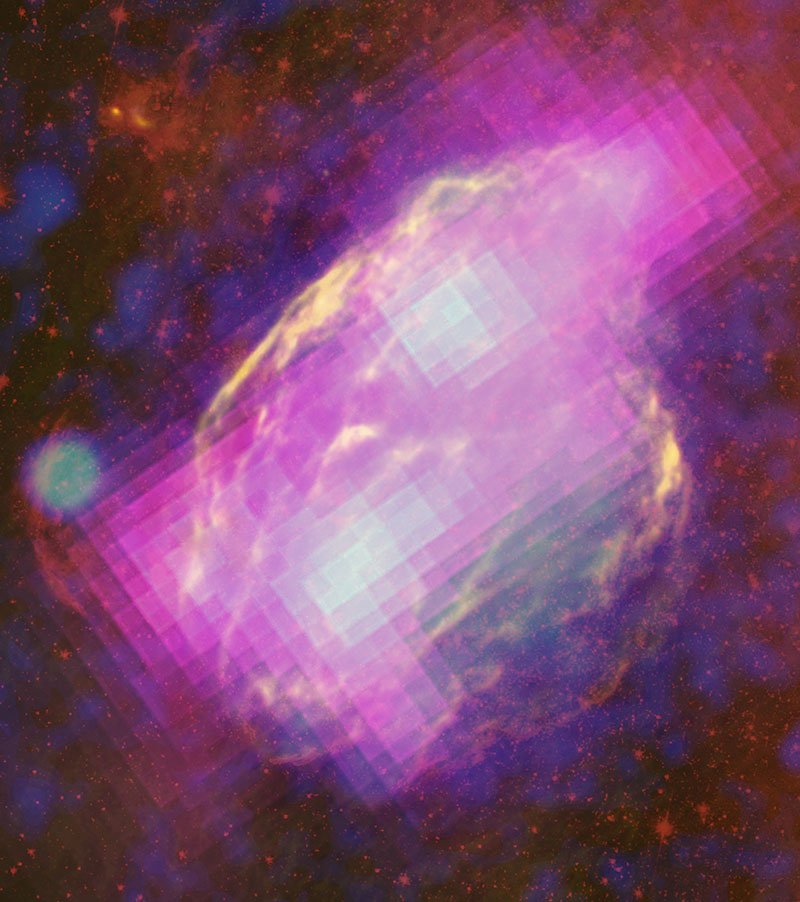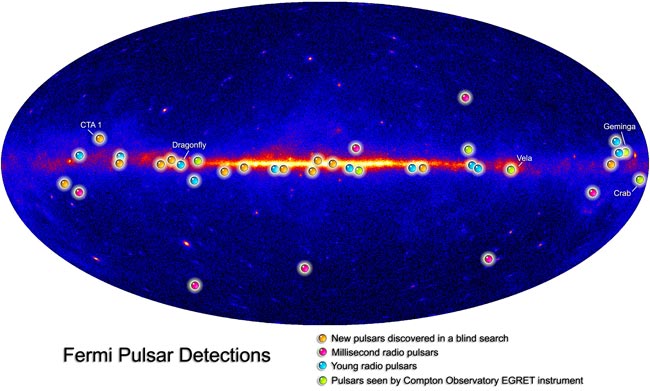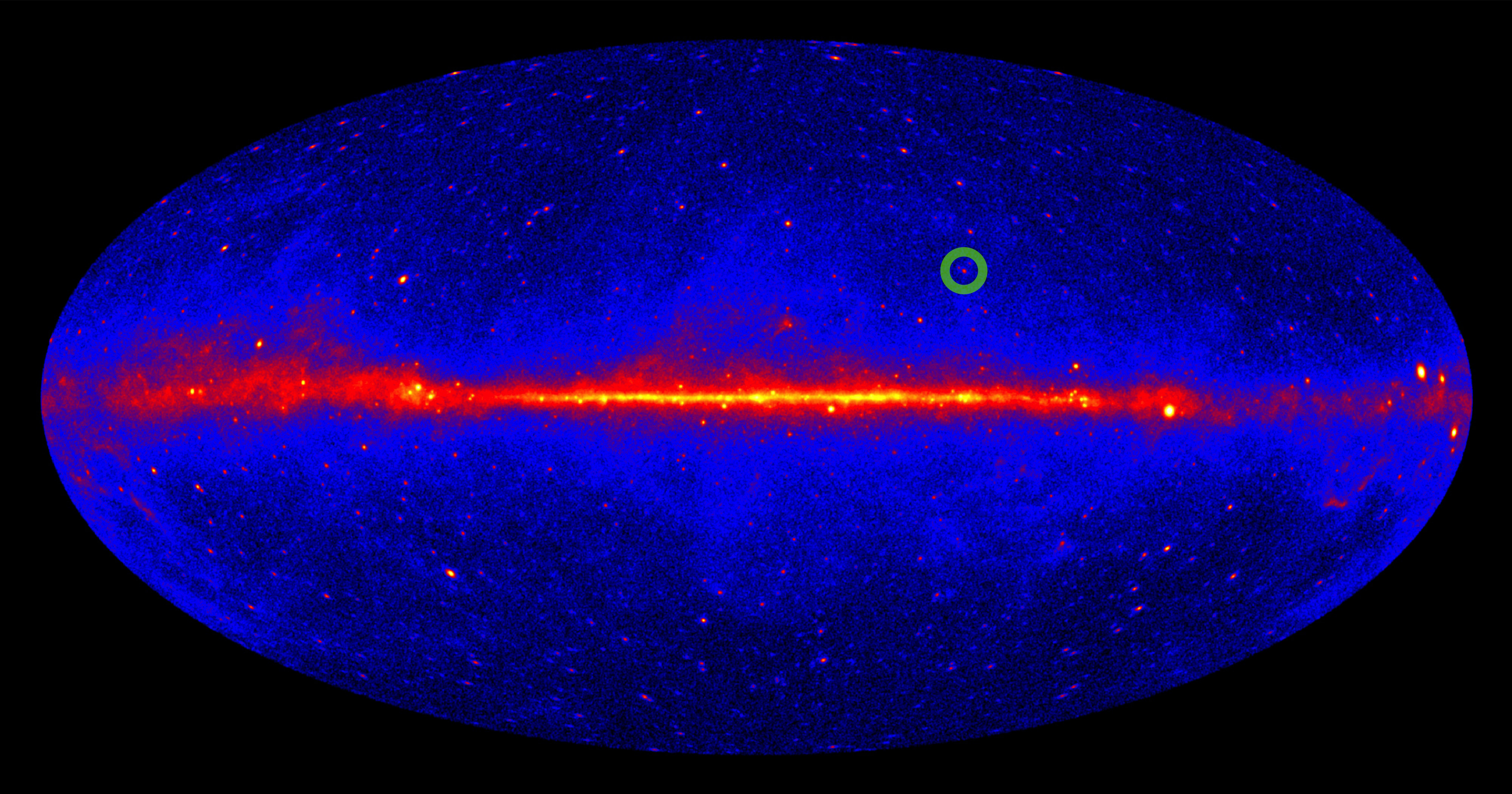Gamma-Ray Universe: Photos by NASA's Fermi Space Telescope
Vela Pulsar as Seen By Fermi Gamma-Ray Telescope
Fermi Gamma-ray Space Telescope's extremely complex movements in space produce this delicate tracery of epicycles produced by the Vela Pulsar,
Best View Ever of Universe's Most Extreme Energy
This view from NASA's Fermi Gamma-ray Space Telescope is the deepest and best-resolved portrait of the gamma-ray sky to date. The image shows how the sky appears at energies more than 150 million times greater than that of visible light. Among the signatures of bright pulsars and active galaxies is something familiar -- a faint path traced by the sun.
Fermi Gamma-ray Space Telescope
Artist's illustration of NASA's Fermi Gamma-ray Space Telescope.
Gamma Rays in Cygnus X Star-Forming Region
Gamma-ray emission detected by NASA's Fermi space telescope fills bubbles of hot gas created by the most massive stars in a region of the constellation Cygnus known as Cygnus X. The turbulence and shock waves produced by these stars make it more difficult for high-energy cosmic rays to traverse the region. When the particles strike gas nuclei or photons of starlight, gamma rays result.
Galactic Haze Seen by Planck and Galactic 'Bubbles' Seen by Fermi
This all-sky image shows the distribution of the galactic haze seen by ESA's Planck mission at microwave frequencies superimposed over the high-energy sky, as seen by NASA's Fermi Gamma-ray Space Telescope. Image released February 13, 2012.
W44 Supernova Remnant
Fermi's LAT mapped GeV-gamma-ray emission (magenta) from the W44 supernova remnant. The features clearly align with filaments detectable in other wavelengths. This composite merges X-rays (blue) from the Germany-led ROSAT mission, infrared (red) from NASA's Spitzer Space Telescope, and radio (orange) from the NRAO's Very Large Array near Socorro, N.M.
Fermi Space Telescope Nearly Hit by Cosmos 1805
NASA's $690 million Fermi space telescope was nearly hit by the dead Russian spy satellite Cosmos 1805 on April 3, 2012. This NASA graphic depicts the orbital paths of the two spacecraft.
Breaking space news, the latest updates on rocket launches, skywatching events and more!
Radio-emitting Lobes in Centaurus A
This radio, optical and gamma-ray composite illustrates the full extent of Cen A's vast radio-emitting lobes. Radio data (orange) reveal that the structures span more than 1.4 million light-years, and Fermi's LAT data (purple) show that they also emit gamma rays.
W44 Supernova Remnant in Parent Star
The W44 supernova remnant is nestled within and interacting with the molecular cloud that formed its parent star. Fermi's LAT detects GeV gamma rays (magenta) produced when the gas is bombarded by cosmic rays, primarily protons. Radio observations (yellow) from the Karl G. Jansky Very Large Array near Socorro, N.M., and infrared (red) data from NASA's Spitzer Space Telescope reveal filamentary structures in the remnant's shell. Blue shows X-ray emission mapped by the Germany-led ROSAT mission.
Fast-Spinning Stars Get New Image
ASA's Fermi Gamma-ray Space Telescope has found 12 previously unknown pulsars (orange). Fermi also detected gamma-ray emissions from known radio pulsars (magenta, cyan) and from known or suspected gamma-ray pulsars identified by NASA's now-defunct Compton Gamma-Ray Observatory (green).
Fast-Orbiting Pulsar in the Gamma-Ray Sky
A map of the gamma-ray sky, created using four years of data collected by NASA's Fermi satellite. The color coding displays the intensity of the detected gamma radiation (low intensity = blue, medium intensity = red, high intensity = yellow). The newly discovered radio pulsar PSR J1311-3430, a strong gamma-ray source, is marked by a green circle.

Space.com is the premier source of space exploration, innovation and astronomy news, chronicling (and celebrating) humanity's ongoing expansion across the final frontier. Originally founded in 1999, Space.com is, and always has been, the passion of writers and editors who are space fans and also trained journalists. Our current news team consists of Editor-in-Chief Tariq Malik; Editor Hanneke Weitering, Senior Space Writer Mike Wall; Senior Writer Meghan Bartels; Senior Writer Chelsea Gohd, Senior Writer Tereza Pultarova and Staff Writer Alexander Cox, focusing on e-commerce. Senior Producer Steve Spaleta oversees our space videos, with Diana Whitcroft as our Social Media Editor.
